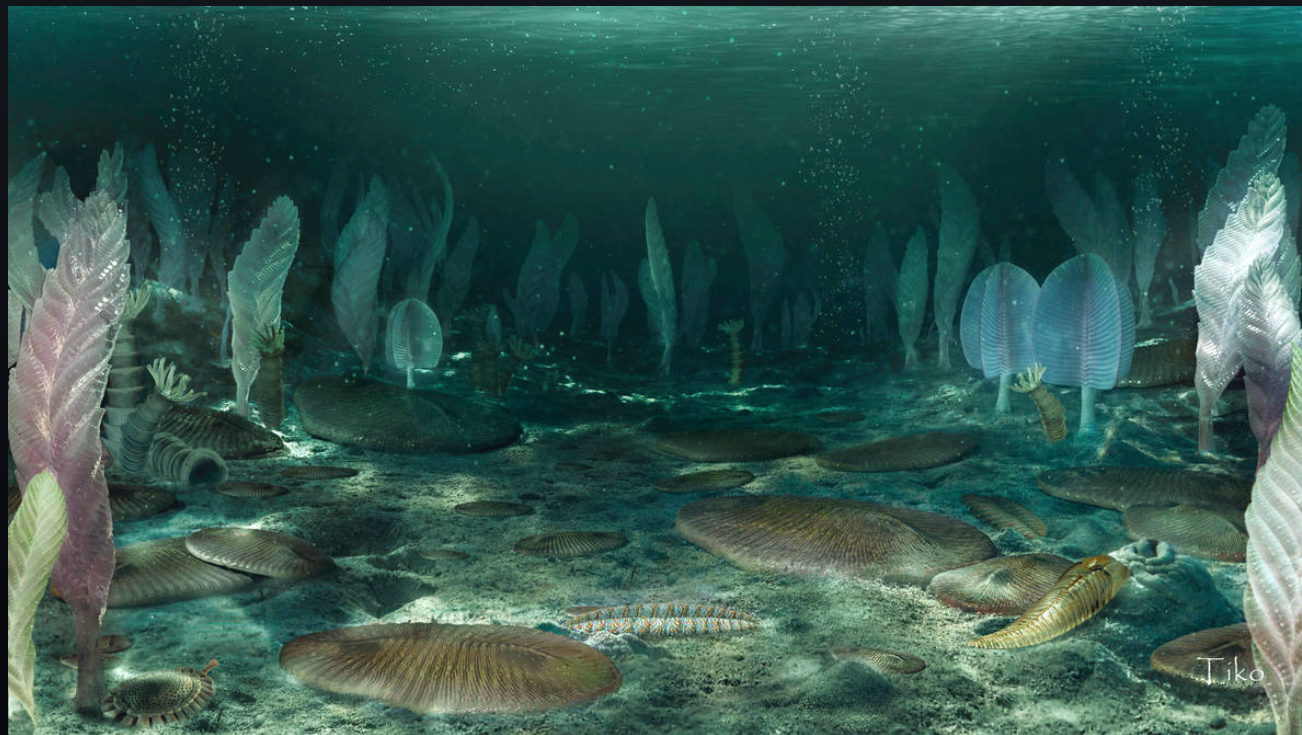Ediacaran fossils
Life is now complex! After more than 3 billion years of single-celled life, the Ediacaran Period (635–538.8 Ma) records the first evidence of macroscopic, soft-bodied, multicellular life. Named after the Ediacara Hills of the Flinders Ranges (South Australia), the Ediacara Biota are found in around 30 locations globally.
Three distinct assemblages, termed the Avalon (575–560 Ma), White Sea (560–550 Ma) and Nama (550–538 Ma) each display varying biodiversity and ecologies. Evolving from mainly fractal organisms during the Avalon to more complex mineralising organisms in the Nama, an exploration of a diverse array of symmetries and life modes are preserved within this period for the first time, providing the springboard for the evolution of life we see today.
Within Australia (notably South Australia), the most diverse assemblage is preserved, the White Sea. With whole in situ communities preserved on the sea floor, excavated fossil beds provide a snapshot of life ~555 million years ago. While many of the ecological traits present in these communities are still present today, most of the organisms themselves remain enigmatic. Potential candidates for poriferans, cnidarians, ctenophores and bilaterians have been hypothesised. However, with the onset of the Cambrian at 538.8 Ma, these soft-bodied organisms all but disappear from the record.
(Text: Tory L. Botha and Diego C. García-Bellido, UofA and SAM)
